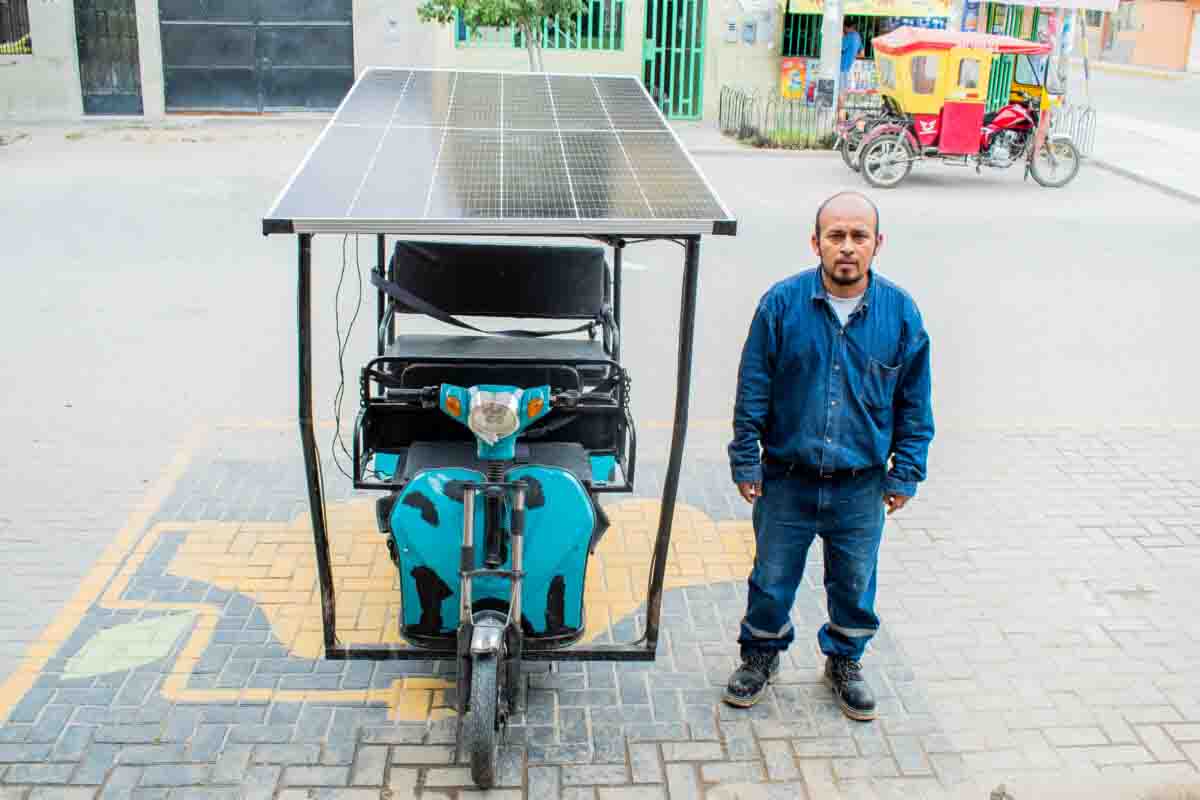Albert Einstein Díaz Vicente, a 44-year-old technician, is revolutionizing transportation in the Peruvian city of Piura with solar-powered "mototaxis": his next goal is to travel the Piura-Sullana route to demonstrate the effectiveness and sustainability of his vehicles innovative

©Walac Noticias
Albert Einstein Díaz Vicente, a visionary 44-year-old technician, is transforming transportation in Piura, Peru, with a bold and revolutionary idea: “mototaxis” powered solely by solar energy. But what drives a man to challenge conventions and bet everything on a sustainable future? How does he plan to overcome technical and economic challenges to prove that his vehicles are not only feasible but also ready to change our daily commute?
From a young age, Díaz showed a natural inclination for mechanics, starting to experiment and create at the age of 16. In 2020, he conceived the ambitious project of solar-powered “mototaxis.” Since then, he has dedicated all his efforts to this innovative field, as he shared in an interview with Walac Noticias:
“My goal is to build a vehicle that operates solely on solar energy, eliminating the need for fossil fuels and thereby reducing environmental pollution. I am in the final phase of testing and intend to seek state funding to start mass production.”
How the “mototaxis” work
The mototaxis designed by Díaz Vicente are equipped with solar panels installed on the roof and an internal system composed of a battery that converts solar energy into electricity. This system allows the vehicle to operate without fossil fuels, significantly reducing environmental pollution. From his laboratory in Las Malvinas, Díaz has adapted five vehicles so far.
Despite economic and technical challenges, Díaz remains committed to his project. His next goal is to travel the Piura-Sullana route with one of his solar vehicles to demonstrate its functionality and feasibility for daily use. Adapting each vehicle comes at a cost, which is why Díaz is seeking support from authorities and the private sector. Additional funding is essential for this innovative project to expand and benefit a larger number of people.
@walacnoticias Albert Einstein Díaz, el piurano que fabrica vehículos con paneles solares. #walacnoticias #peru #piura #panelessolares #motos #fyp #fypシ゚viral #viral #tiktok #loultimo #tendencia #experimentos
Source: Walac Noticias
